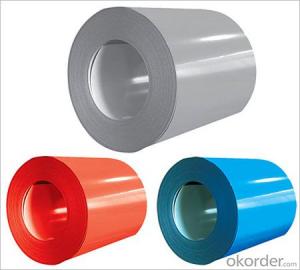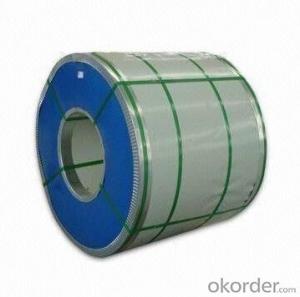RAL Colored PPGL Steel Coil Plate from China
- Loading Port:
- Qingdao
- Payment Terms:
- TT or LC
- Min Order Qty:
- 10 m.t.
- Supply Capability:
- 1000 m.t./month
OKorder Service Pledge
OKorder Financial Service
You Might Also Like
RAL Colored PPGL Steel Coil Plate from China
Main Features of RAL Colored PPGL Steel Coil Plate
Thickness: Customized, 0.12-2.0MM
Model Number: Q235/Q195/JISG/SPCD
Type: Steel Coil, Steel coil
Technique: Cold Rolled
Surface Treatment: Galvanized
Application: Boiler Plate
Special Use: High-strength Steel Plate
Width: Customized, 600-1250mm
Length: Customized
Grade: SGCC, SPCC, DC51D, SGHC,A653
Surface treatment: Galvanized
Zinc coating: 60-275g/sqm
HRB: 65-95
Coil weight: 3-10/MT
Tolerance: thickness+/-0.01mm
Characteristic RAL Colored PPGL Steel Coil Plate:
Standard:JIS G3302 / JIS G3312 / ASTM A653M / A924M 1998/GBT127542006,GB/T97611988,GB/T97541988, GB/T67391996, HG/T3830-2006, HG/T3830-2006, GB/T1732-93, GB/T9286-1998, GB/T1771-1991, GB/T14522-93
Raw material:SGCC,SPCC,DC51D,SGHC,A653,201,202,321,301,302,304,304L,316,316L,310,310S,409,410,430,439,443,445,441 and so on
FQA:
Guaranteed:If quality doesn’t match the description we give or promise before you place your order, we promise 100% refund.
Pictures for RAL Colored PPGL Steel Coil Plate:
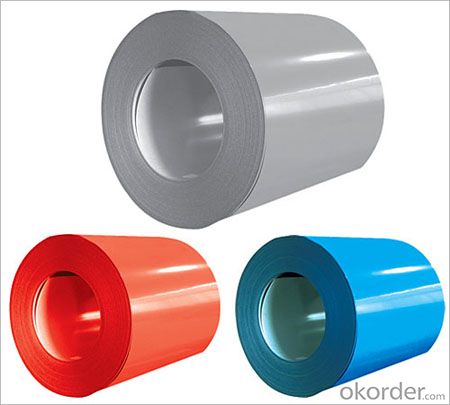
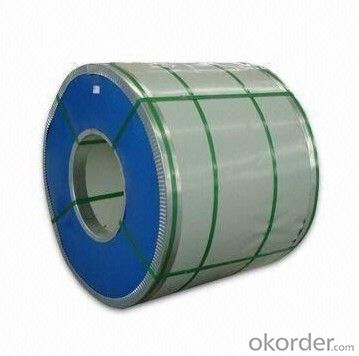
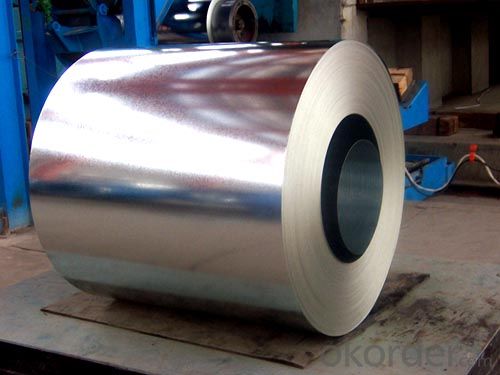
- Q:This is not for around the house. It is for my lab. I am pretty sure these one wires are Aluminum, but I need the connector they were made with and the power cable is copper. Would it be okay to still try to join the two.
- The main problem with aluminum wiring is cold creep. When aluminum wiring warms up, it expands. When it cools down, it contracts. Unlike copper, when aluminum goes through a number of warm/cool cycles it loses a bit of tightness each time. To make it worse, aluminum oxidizes, or corrodes when in contact with certain types of metal, so the resistance of the connection goes up. Which causes it to heat up and corrode/oxidize still more. Eventually the wire starts getting very hot, the insulation melts or it damages the fixture it's attached to, and possibly even cause a fire. Anything attached to aluminum wiring should be rated for it. It will be stamped with Al/Cu or CO/ALR. Wires should be properly connected (at least 3/4 way around the screw in a clockwise direction). Connections should be very tight. Any connections using push-in terminals should be redone with the proper screw connections. Connections between aluminum and copper wire need to be handled specially. The NEC requires that the wire be connected together using special crimp devices, with a special anti-oxidant grease. The tools and materials for this are expensive - not practical to do it yourself unless you can borrow the tool. Good luck.
- Q:Are aluminum coils suitable for low-maintenance applications?
- Yes, aluminum coils are suitable for low-maintenance applications. Aluminum is known for its durability and resistance to corrosion, making it an excellent choice for applications that require minimal upkeep. Unlike other materials, such as steel, aluminum coils do not rust or require regular painting to maintain their appearance. Additionally, aluminum is lightweight, which can make installation and handling easier, especially in low-maintenance applications where frequent maintenance may not be feasible or desirable. Overall, aluminum coils offer a reliable and low-maintenance solution for various applications.
- Q:Can aluminum coils be used in electrical cables?
- Electrical cables can indeed incorporate aluminum coils. Aluminum is widely utilized as a material for electrical conductors due to its exceptional electrical conductivity and comparatively lower cost when compared to copper. Its usage is particularly prominent in power transmission and distribution cables that necessitate long-distance transmission. Overhead power lines and underground cables often employ aluminum coils. However, it is crucial to acknowledge that aluminum possesses a lower tensile strength than copper, requiring careful design and manufacturing of the cables to ensure sufficient mechanical strength. Furthermore, achieving the same electrical performance with aluminum conductors necessitates larger cross-sectional areas compared to copper, potentially resulting in slightly larger cable sizes.
- Q:Can aluminum coils be used in the production of aluminum downspouts?
- Certainly, aluminum coils have the potential to be employed in the manufacturing process of aluminum downspouts. Normally, high-grade aluminum alloy is utilized to fabricate aluminum coils, which are subsequently transformed into thin sheets by means of rolling. These sheets can be conveniently cut and molded into diverse dimensions and forms, including downspouts. The lightweight, long-lasting, and corrosion-resistant characteristics of aluminum make it a favored option for downspouts. Moreover, aluminum coils can be effortlessly manipulated and shaped according to precise design prerequisites, rendering them appropriate for the production of aluminum downspouts.
- Q:How are aluminum coils manufactured to specific dimensions?
- Precision engineering and cutting-edge technology are utilized to manufacture aluminum coils with specific dimensions. The process commences with the selection of high-quality aluminum ingots, which are subsequently melted and cast into long, flat strips. Upon achieving the form of flat strips, the aluminum undergoes a sequence of rolling operations. The strips pass through a rolling mill, gradually decreasing in thickness and elongating in length. This rolling process is instrumental in attaining the desired dimensions and thickness for the coils. Following the initial rolling, the strips undergo annealing, a process involving heating the aluminum to a specific temperature and then cooling it slowly. This procedure enhances the ductility and reduces internal stresses in the metal, making it more manageable for subsequent manufacturing steps. The subsequent step is slitting, which involves cutting the wide strip into narrower strips of the desired width. High-precision slitting machines ensure accurate and consistent dimensions for each coil. Additionally, edge trimming is performed during the slitting process to eliminate irregularities and ensure straight edges. Once the narrower strips are obtained, specialized machines are utilized to coil them. These machines carefully wind the strips into coils of the desired size and shape, ensuring secure and tight winding. To further enhance dimensional accuracy, the coils may undergo a final leveling process. This process entails passing the coils through a machine that applies pressure to flatten any irregularities or distortions in the metal, ensuring a uniform and consistent thickness. In summary, the manufacturing of aluminum coils with specific dimensions necessitates a combination of precision rolling, slitting, coiling, and leveling processes. These processes, in conjunction with advanced machinery and quality control measures, guarantee that the final product meets the precise specifications required by the customer.
- Q:How do aluminum coils compare to ceramic coils in terms of thermal conductivity?
- Aluminum coils have significantly higher thermal conductivity compared to ceramic coils.
- Q:What are the common fabrication techniques used for aluminum coils?
- Some common fabrication techniques used for aluminum coils include rolling, slitting, annealing, and coating.
- Q:How are aluminum coils used in the production of architectural panels?
- Aluminum coils are used in the production of architectural panels as they serve as the primary material for manufacturing these panels. The coils are processed through various techniques such as cutting, bending, and shaping to create the desired shape and dimensions for the architectural panels. These panels are then used for cladding, roofing, or wall systems in buildings, providing aesthetic appeal, weather protection, and structural integrity.
- Q:What do the two items (COIL:873347 HEAT: number) on the label of the raw material of aluminum coil stand for?
- COIL means aluminum coil and HEAT means heating, so together they mean hot rolled coil.
- Q:Can aluminum coils be used for automotive heat shields?
- Automotive heat shields can indeed utilize aluminum coils. Aluminum, known for its outstanding thermal conductivity and high melting point, is frequently employed as a heat shield material. Its lightweight nature and remarkable resistance to corrosion make it particularly well-suited for automotive purposes. By effortlessly molding aluminum coils into the desired configuration, effective heat insulation can be attained, safeguarding delicate components from the engine or exhaust system's excessive heat. Moreover, aluminum is cost-efficient and easily accessible, contributing to its widespread preference as an automotive heat shield material.
1. Manufacturer Overview |
|
|---|---|
| Location | |
| Year Established | |
| Annual Output Value | |
| Main Markets | |
| Company Certifications | |
2. Manufacturer Certificates |
|
|---|---|
| a) Certification Name | |
| Range | |
| Reference | |
| Validity Period | |
3. Manufacturer Capability |
|
|---|---|
| a)Trade Capacity | |
| Nearest Port | |
| Export Percentage | |
| No.of Employees in Trade Department | |
| Language Spoken: | |
| b)Factory Information | |
| Factory Size: | |
| No. of Production Lines | |
| Contract Manufacturing | |
| Product Price Range | |
Send your message to us
RAL Colored PPGL Steel Coil Plate from China
- Loading Port:
- Qingdao
- Payment Terms:
- TT or LC
- Min Order Qty:
- 10 m.t.
- Supply Capability:
- 1000 m.t./month
OKorder Service Pledge
OKorder Financial Service
Similar products
New products
Hot products
Related keywords
